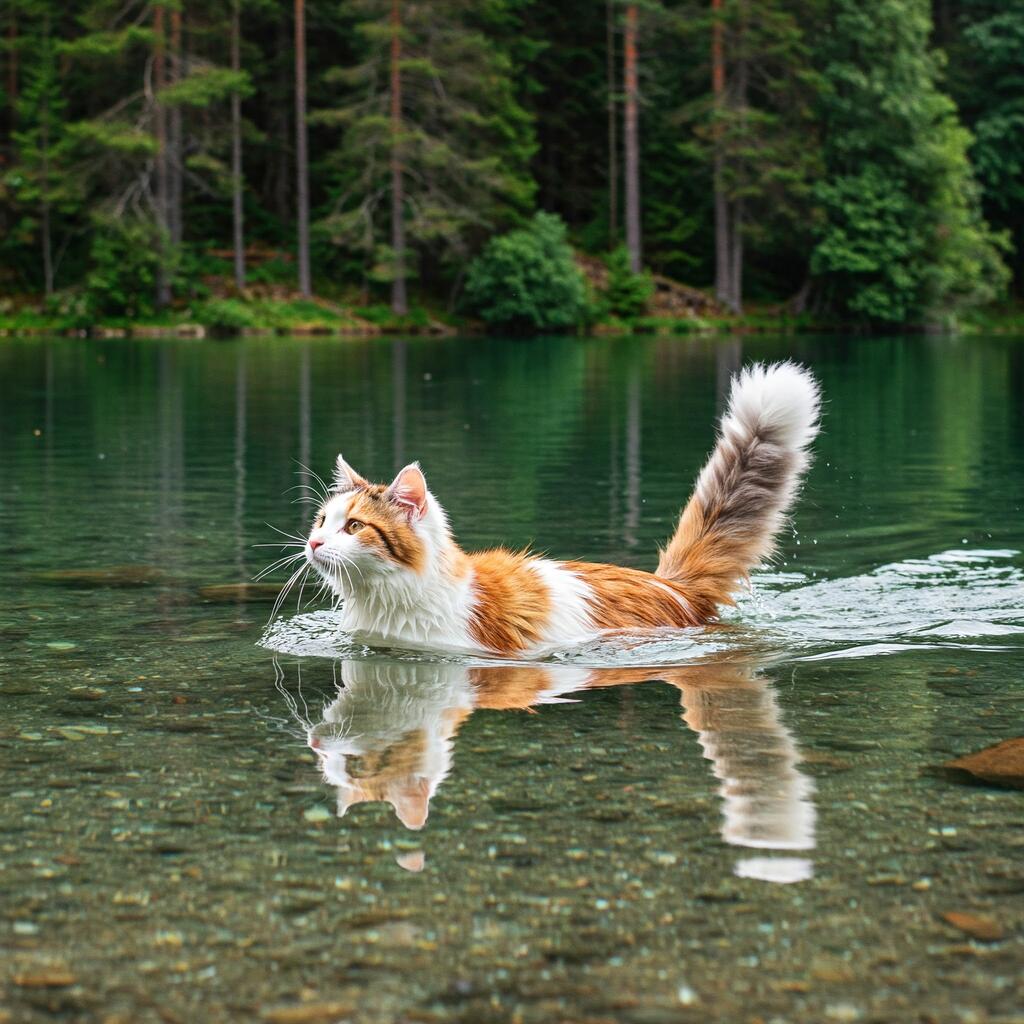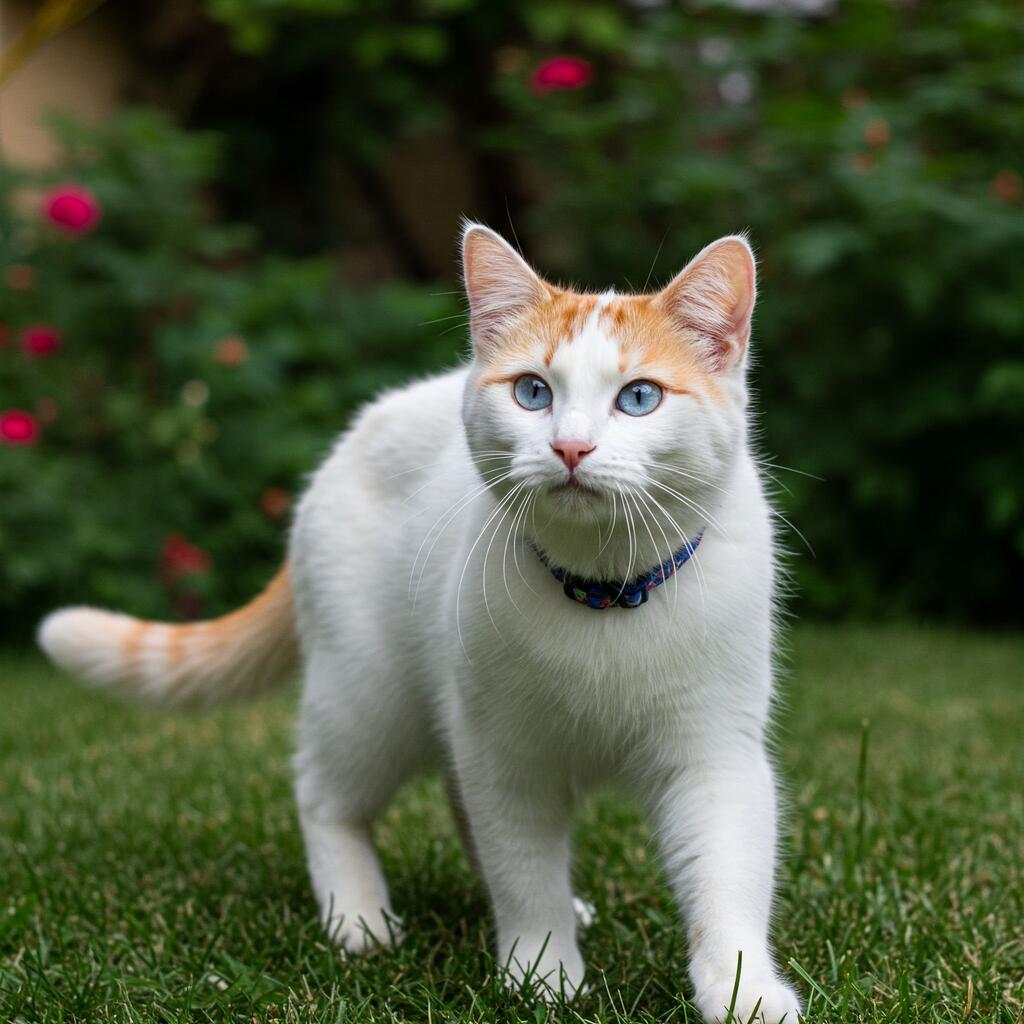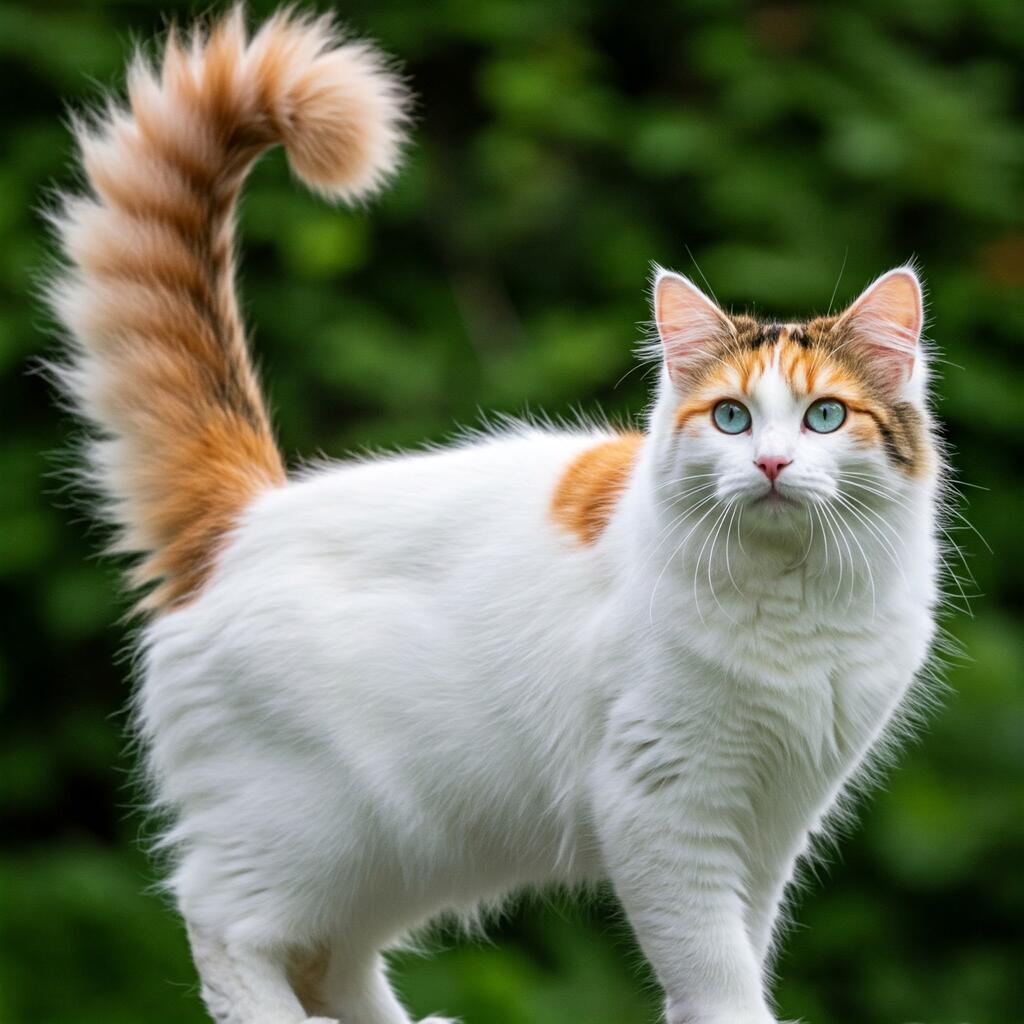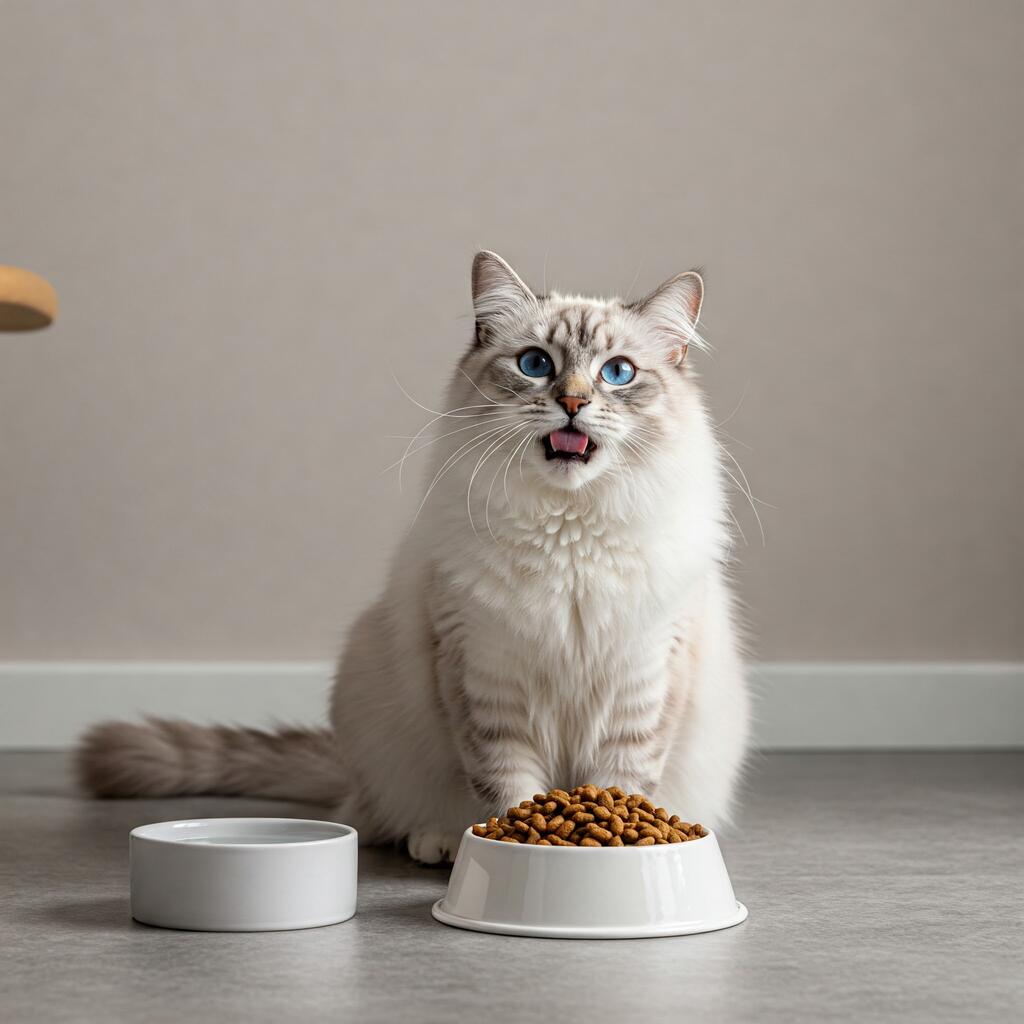
The Swimming Abilities of the Turkish Van Cat
The Cat Turkish Van is native to the Lake Van highlands region in south-east Turkey, at the foot of Mount Ararat. According to some scholars, these cats arrived from China in the retinue of merchants travelling along the Silk Road. Thanks to some archaeological finds, it would appear that this cat was already known to the ancient Romans who conquered Armenia and that the local tribes had painted these cats on their war banners and armour.
This makes them one of the oldest known breeds. There is no shortage of stories and legends about these felines, who are also called Allah's cats in Turkey. It is said that these two felines, who were aboard Noah's Ark, jumped into the sea when the waters began to recede and swam to Mount Ararat. The Prophet then blessed them and where he touched them, on their heads and tails the fur turned reddish.
In another legend, Allah saw an all-white cat swimming in a pond, thought it was drowning, and given the natural aversion of felines to this element, he rushed to save it and grabbed it by the head and tail. The parts that were touched by the Prophet have since taken on a reddish colouring.
Character of Van's Cat

He loves to play a lot, he is always on the move looking for prey or objects to interact with, he is particularly active and lively, a very skilful swimmer and fisherman, also a diehard hunter, with an indomitable and very brave character. It is a cat that needs attention, to play and to discharge its particular energy. More than a lounge cat, it can be said to be a garden adventurer.
It is therefore desirable that whoever takes one of these beautiful felines has a safe garden at his disposal, from which he cannot leave, because he is very curious and could stray very far and thus run into a whole series of dangers.
The best would be to provide this garden with a pond or a small pool, perhaps with fish in it (which would be short-lived, however), where our cat can dive in, which he loves to do. It has been noted that having a small pond, he will throw balls, grass or twigs into it only to dive in to catch his prey. As for any other animals in the family, dogs or cats, he only tolerates them if he can dominate them.
Although very playful, it is not suitable for small children as its exuberance may lead it to play in a somewhat impetuous manner. He can be an excellent companion for people who live alone but have time and the desire to play with him often enough.
He does not stay still in one place for very long, does not like to be held even though he loves cuddles and caresses very much. He is a skilful jumper and can therefore be found on the highest furniture in the house from which he can dominate everything around him.
He was brought to Europe in 1955 by two English ladies who were in the area for tourism. Fascinated by the local feline population, they obtained two specimens of Cat Turkish Van and brought them to England where the two cats had offspring that repeated the traits and colouring of their parents, thus starting a breeding programme.
Appearance of the Cat Turkish Van

The medium-length legs are rather muscular and the pads of the feet are adorned with tufts of fur. The muzzle is rounded, with a straight nose of medium length with a slight depression at eye level. The ears are large and well covered with fur, wide at the base, rounded and close on top of the head. The eyes are magnificent, large, very expressive, oval and slightly oblique, amber, blue and it is not uncommon to find specimens with uneven eyes.
Nutrition, care and health of the Cat Turkish Van

For the rest he eats both wet and dry. He prefers fish, but also likes meat. During the moulting period it is a good idea to supplement the diet with specific supplements. Your vet will be able to tell you which ones are most suitable for your cat. If he cannot do as much exercise as he needs, it is a good idea to check the daily quantity of food because he is a cat that tends to eat more than he needs, due to the fact that he is hyperactive.






















